There are iconic “logos” that represent Portugal which all tourists recognize. Colorful sardines, fado guitars, azulejo tiles, and the Barcelos rooster are all well-known. Lisbon has its yellow trams, black crows, and a caravel. There’s one image, however, that isn’t very obvious to tourists: it’s a man with glasses, a hat and a mustache. His name is Fernando Pessoa and here’s what you need to know about him.
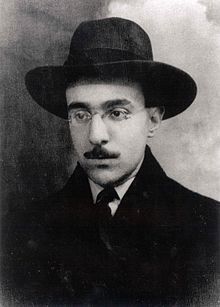
Fernando António Nogueira Pessoa was born in 1888. Losing his father and two siblings at an early age was tough on Pessoa, who found solace in reading and writing. After his mother’s marriage to her second husband, the family moved to South Africa, where Pessoa was given a British education. Writing in both Portuguese and English makes Pessoa a unique figure in the Portuguese literary canon. Famed literary critic Harold Bloom included Pessoa on his list of 26 writers he considered essential to the Western canon, which included Dante, Shakespeare, and Proust. He described Pessoa as a reborn Walt Whitman, “who gives separate names to ‘my self,’ ‘the real me,’ or ‘me myself,’ and ‘my soul,’ and writes wonderful books of poetry for all of them.” His dominance of both languages also facilitated his work as a translator, translating works of authors like Edgar Allan Poe.
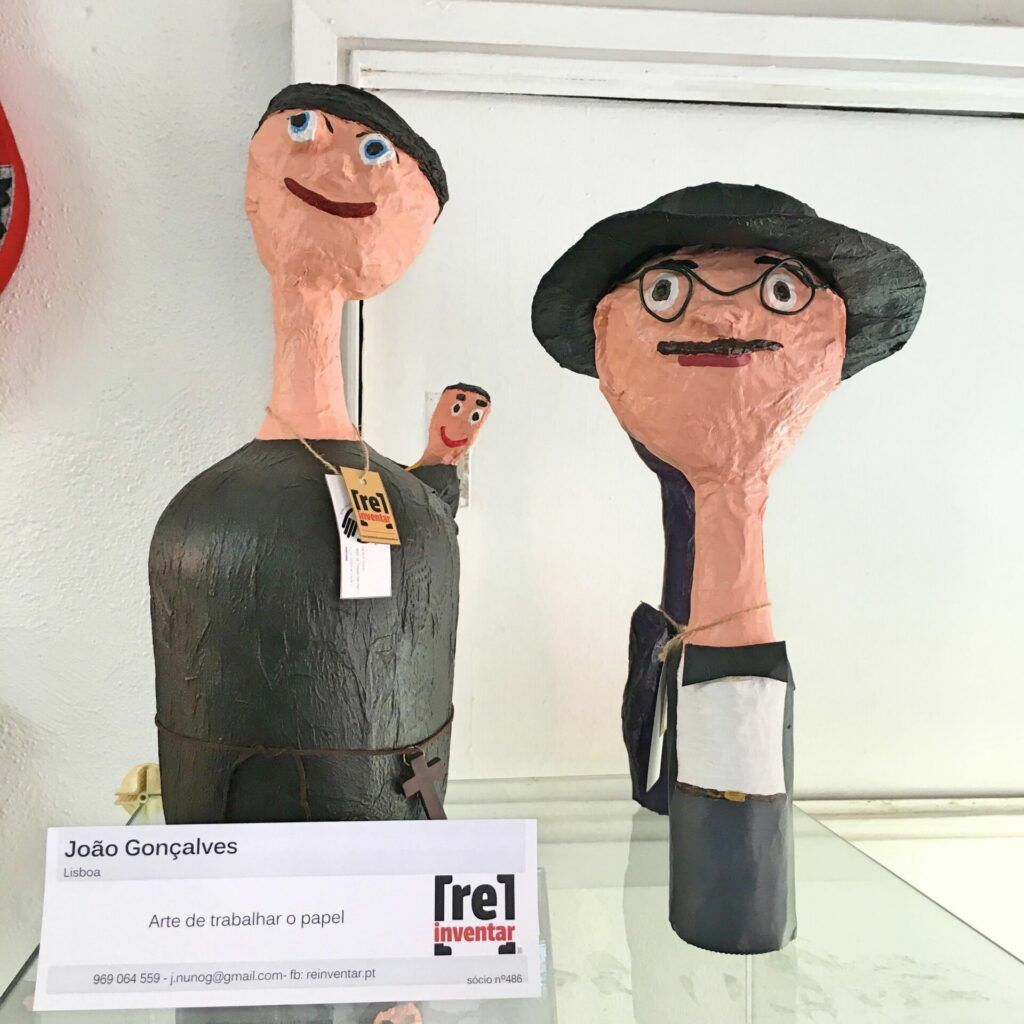
Pessoa continued to write poetry into adulthood and, in 1905, decided to move back to Portugal for good. Always maintaining a love of reading and writing, Pessoa started making a living from writing (although not always creative writing). His break came in 1915 when he was published in Orpheu, a literary magazine. He is credited with bringing the modernist movement to Portugal, which was naturally accompanied by some controversy. Throughout his life, Pessoa published under numerous heteronyms. Heteronyms are more than pen names; they’re actually characters with individual writing styles, histories and personas. Literary critics praise him for his artistry in creating these heteronyms. On November 29th, 1935, Pessoa wrote his last words in English “I know not what tomorrow will bring”. The following day, he died aged 47, presumably of pancreatitis or kidney disease.
Perhaps due to his distinctive signature look, and his contribution to 20th century writing, the figure of Fernando Pessoa has taken on an emblematic connotation. He is, almost certainly, the most famous Portuguese poet after Luís de Camões. He’s particularly popular in his hometown of Lisbon, although his image is recognized all over the country. The cult of Pessoa is such that his image is featured on everything from posters to art pieces and even to Vista Alegre china (which features 4 of his heteronyms). Fernando Pessoa has been used on gold coins and several stamps.

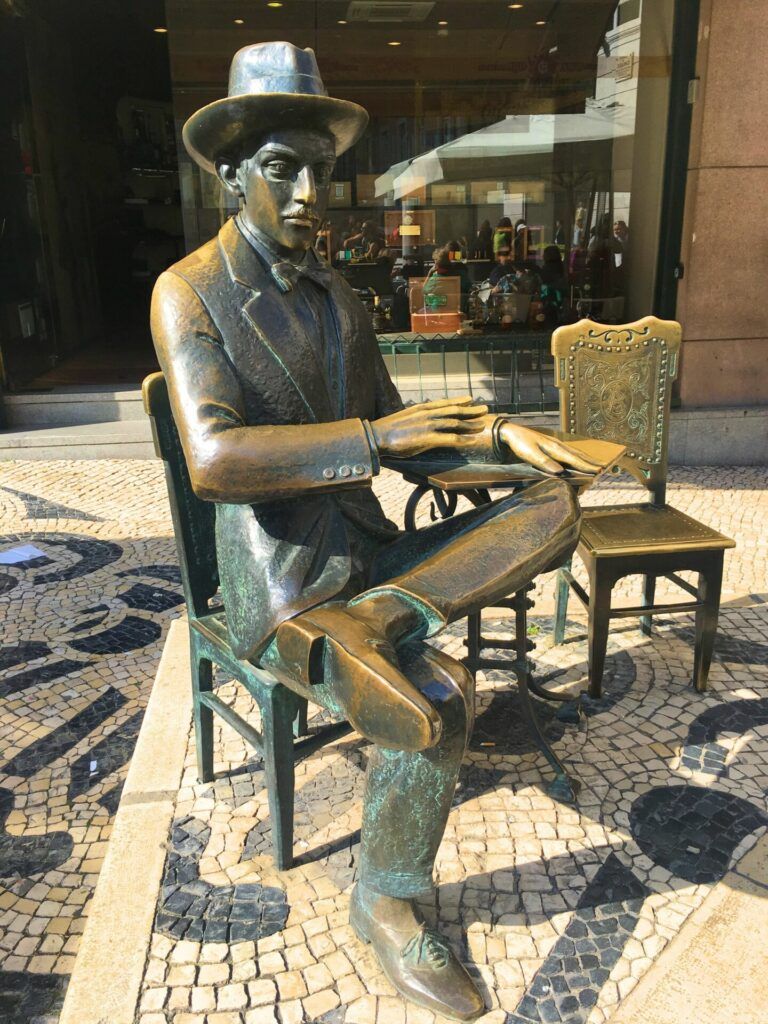
If two-dimensional depictions of Fernando Pessoa don’t quite cut it for you, head to Café A Brasileira where a bronze statue of him can be found right outside the café. The writer used to frequent the café in the 1910s – it was a favorite haunt of the avant-garde of writers of his day.
So now, when you go to Portugal and see the image of a black-haired man with glasses, a hat, and a mustache, you can be confident in your knowledge of who he is. Perhaps this post will even make you curious about his works (after all, why is he so acclaimed?). I leave you with one of his quotes, about being happy in the face of adversity: “Pedras no caminho? Guardo todas, um dia vou construir um castelo…” – “Stones along the path? I save them all, one day, I’ll build a castle…”
Cover image c/o http://afnb-bsb-colecionismo.blogspot.com
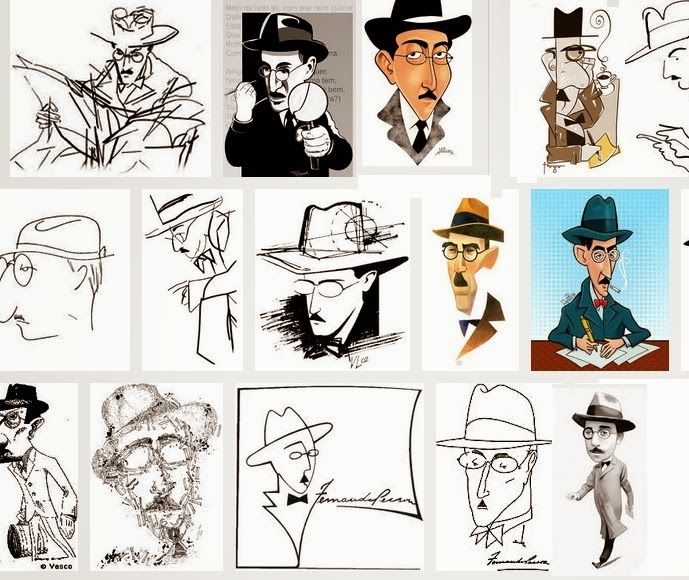
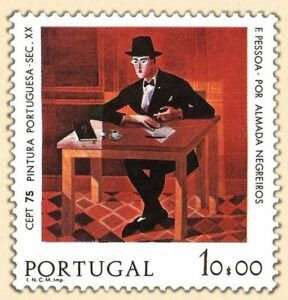
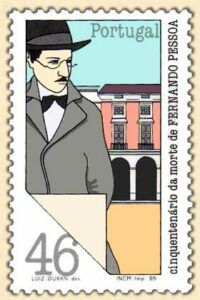
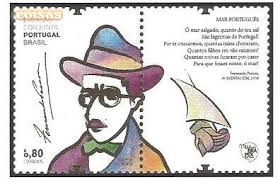


I believe that much of his inspiration was the result of frequent visits to A Ginjinha.
He is why I was in Portugal, For the Disquiet introduction to his poetry,,,